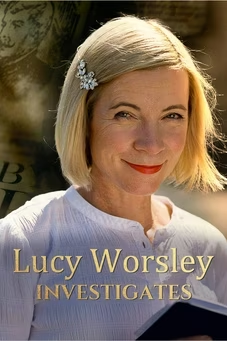
Maries County
Episode 5 | 2m 58sVideo has Closed Captions
This episode of Missouri in Minutes explores the farming-focused community of Maries County.
Step inside Maries County’s storied jail, explore their farming roots that go back generations and get a glimpse into their close-knit communities.
Problems playing video? | Closed Captioning Feedback
Problems playing video? | Closed Captioning Feedback
Missouri in Minutes is a local public television program presented by KMOS

Maries County
Episode 5 | 2m 58sVideo has Closed Captions
Step inside Maries County’s storied jail, explore their farming roots that go back generations and get a glimpse into their close-knit communities.
Problems playing video? | Closed Captioning Feedback
How to Watch Missouri in Minutes
Missouri in Minutes is available to stream on pbs.org and the free PBS App, available on iPhone, Apple TV, Android TV, Android smartphones, Amazon Fire TV, Amazon Fire Tablet, Roku, Samsung Smart TV, and Vizio.
Providing Support for PBS.org
Learn Moreabout PBS online sponsorshipMaries County was formed officially as Maries County in 1855, and shortly thereafter, the city of Vienna came on the city of Belle.
In 1855, shortly after the county was formed, they realized they needed a county jail to house some of the offenders that got in trouble within the community.
And so they built the the jail there.
It was built in 1856 until 1858 and then was in business for 84 years after.
it was made out of native limestone and old oak boards that were shipped up the river.
The limestone was quarried just a few blocks away from here.
And, it served its purpose sitting here.
How hot it is today.
I can tell you that the inmates that were housed here were probably pretty hot and miserable.
So it's would have maybe been an incentive not to re-offend We have Belle, Missouri, which is shared with Osage County and Vienna.
It's half and half.
We have Brinktown, Missouri, Vichy, Missouri, and Vienna, Missouri.
Main crops Corn is is our main crop.
Mostly cattle.
Cattle is our main thing, the cattle is important because even back in 1855, John Felker, who's the cabin is next door, did a cattle drive.
He got all the communities here and did a cattle drive to California during the gold rush to make money, you know, for the community and stuff.
So cattle has been a big thing here for forever.
We have a local stockyard that sells cattle every Wednesday.
So that's a big, big draw for the farmers here as well.
we also have a designation of Century Farms.
So if the farm has been in your family for more than 100 years, you're recognized as such, and you get a special, plaque to display on your farmland.
So people driving by know, oh, this is a Century Farm.
So we're small communities, very small.
it's an enjoyable place to live.
We all get together for our children's events and baseball and softball and basketball and just, you know, sports community.
And We have a wonderful volunteer fire department.
We have a wonderful organizations, you know, our historic historical society, a chamber of commerce.
We have all kinds of organizations that pick up and help build our community and make us better.
You know, as one, whenever somebody needs something, everyone else just steps in and helps.
It's amazing how generous and how helpful everyone is to each other.
I can't imagine living anywhere else because of that.
It's it's fantastic.
Support for PBS provided by:
Missouri in Minutes is a local public television program presented by KMOS















